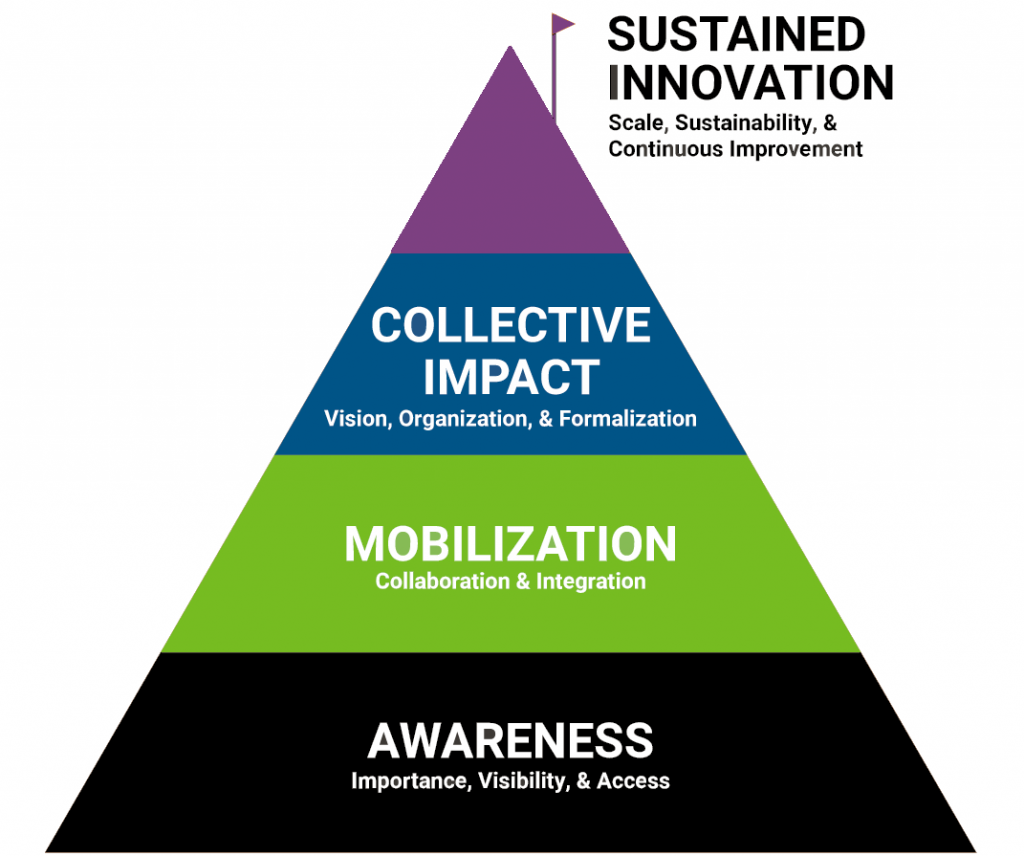College-Going Culture Toolkit
Scroll to Start
Intro
Why This Matters
Less than one-third of West Virginians currently hold an associate degree or higher, yet 60 percent of working-aged West Virginians will need a certificate or degree in order to meet future workforce demands. To build a bright and prosperous future in the Mountain State, we must increase the number of students who are going on to pursue higher education — and help set them up for success as they work toward a postsecondary diploma.
That’s why the State of West Virginia has set a statewide goal to equip at least 60 percent of West Virginians with a certificate or degree by 2030. This initiative, dubbed “West Virginia’s Climb,” is a collaborative effort amongst educators, business leaders, policymakers, and community members to support the educational attainment of ALL West Virginians.
What We Mean by “College”
Throughout this toolkit, we are using the word “college” as a catchall for any form of postsecondary training or education. That includes apprenticeships, certificate programs, two-year degrees, four-year degrees, or military service and training.
What is a College-Going Culture?
UC Berkeley defines a “College-Going Culture” as “the environment, attitudes, and practices in schools and communities that encourage students and families to obtain the information, tools, and perspective to enhance access to and success in post-secondary education.”
So what does that look like? It can vary from school to school or community to community, but some characteristics stand out as consistent indicators. The College Board observes that, within a College-Going Culture, pursuing postsecondary education is seen as the norm, not the exception. They go on to note that College-Going Cultures are centered around three key values:
- Appreciation of academics
- Desire to succeed
- Drive to attend college and become a lifelong learner
But they also note that for a College-Going Culture to exist, these values must not only be present but deemed applicable for ALL students, including those that have traditionally been underserved by higher education such as
- Low-income students
- First-generation students
- Minority students
- Lower-achieving students
While we encourage all schools and communities to strive toward building a strong College-Going Culture, it is important to note that this is not an endeavor you can complete or ultimately “check off your to-do list.”
In fact, those communities that demonstrate the highest levels of maturity when it comes to supporting college-going are those that recognize that ongoing innovation and continual improvement are critical to long-term success.
How to Use this Toolkit
This toolkit is organized around the four levels of what we’re calling the Change Maker’s Pyramid: Awareness, Mobilization, Collective Impact, and Sustained Innovation. You can think of these as levels of maturity, with each level building on the one prior. We’ve designed this toolkit to allow you to work at whatever level you feel best reflects your community’s current culture and needs.

To begin, complete the College-Going Culture Assessment. From there, feel free to jump around to the sections of the toolkit that best meet your community’s needs.
For each of the four maturity levels, we’ve identified goals to aim for, strategies that may help you achieve those goals, practical action steps or tactics you can implement, and methods to evaluate your progress.
We’ve also included a workbook (Download MS Word or PDF) to help you think through your ideas and develop a strategy for creating, strengthening, or sustaining a college-going culture in your school community. You may want to recruit a team of individuals from your community to work through the workbook together. Or you can start alone and recruit additional support along the way.
Finally, we’ve provided several resource sections including
- Discussion Guides for critical issues in college access and success
- Implementation Guides to assist you in launching proven initiatives and best practices
- Templates to help you in your day-to-day work such as crafting a communications plan, developing a social media calendar, or creating a dashboard to track your community’s progress
- An alphabetical Index listing all resources included throughout the toolkit.
Developing a College-Going Culture in 4 Stages
Awareness
Building awareness for your cause is the first step toward driving cultural change on any issue. You can think of the Awareness stage as your opportunity to build the foundational understanding needed to engage your community.
Build Awareness
Mobilization
While one or two dedicated individuals can do a lot to increase awareness, true cultural change can’t happen until you establish critical mass. The Mobilization level is where we begin to build the broader support needed to drive meaningful change.
Mobilize Your Community
Collective Impact
Although strengthening the college-going culture within your school building is a powerful way to support postsecondary attainment, the old adage “it takes a village” rings true when it comes to ensuring true cultural transformation.
Expand Your Impact
Sustained Innovation
The very definitions of sustainability and continual improvement indicate that this work is never ending. And one of the more exciting things about working in the college attainment space is that the opportunities for innovation are limitless.
